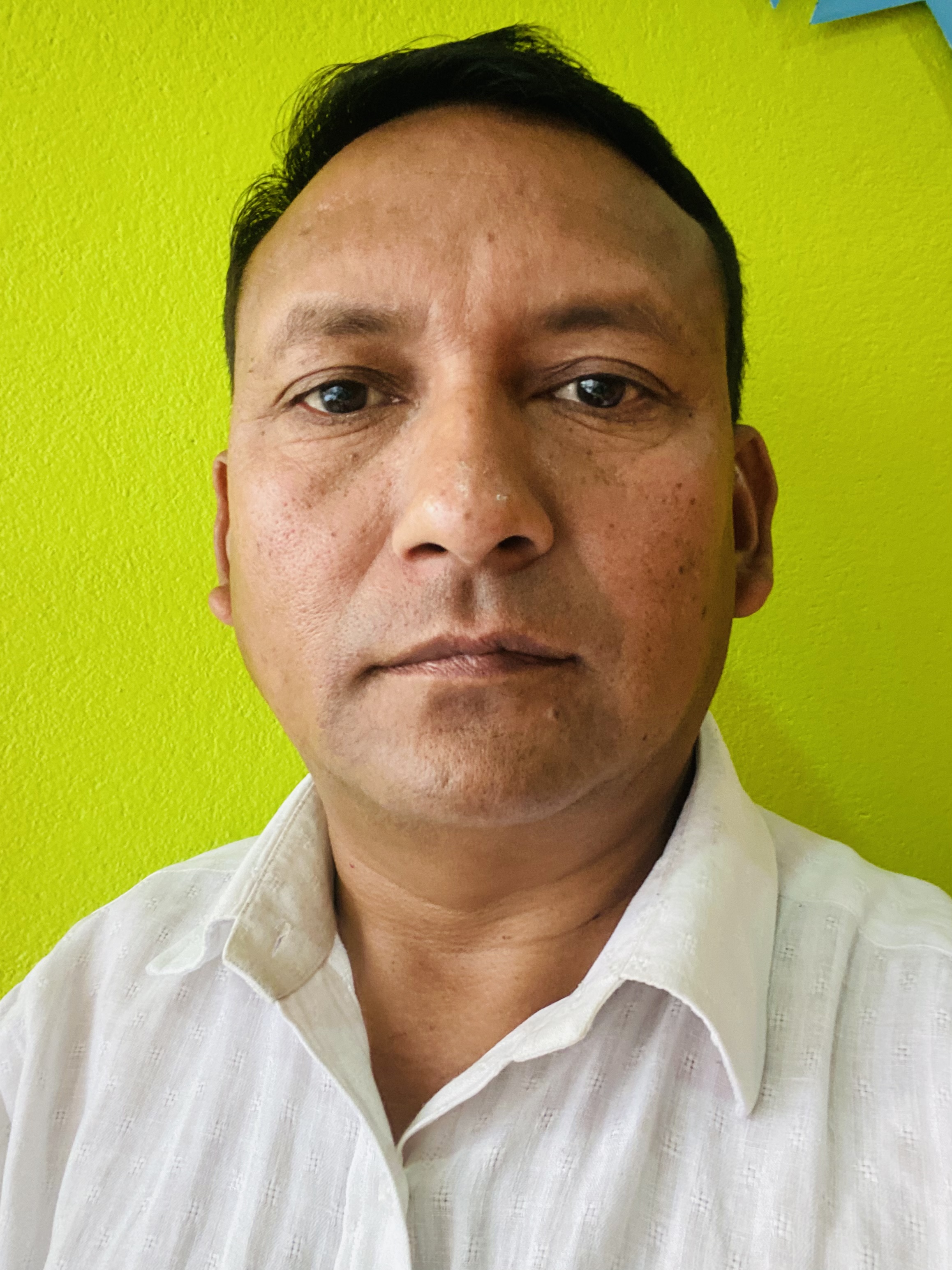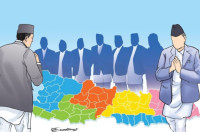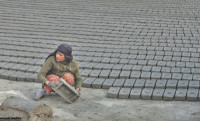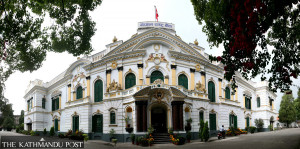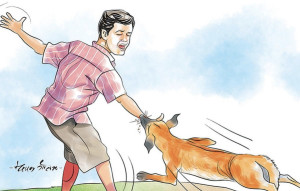Columns
Distracted by communist utopia
Communist leaders are adept at falsely wooing Dalits with great promises about our freedom.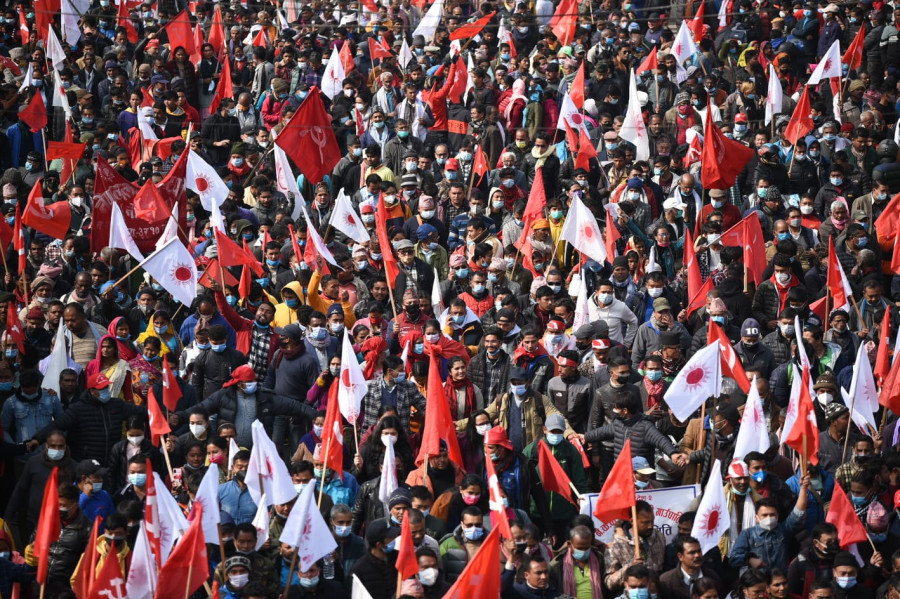
Mitra Pariyar
In 1953-54, veteran communist leader Mohan Bikram Singh started preaching communist ideology and initiated a peasant uprising from his village, Narikot, Pyuthan. In the seven decades since, Nepali political landscape has been predominated by communist ideologies and parties (a good source would be The Maoist Insurgency in Nepal: Revolution in the Twenty-First Century, 2009, by Mahendra Lawoti and Anuap Kumr Pahari).
To date, the majority of Dalits are attached to communist parties, big and small, and many still dream of a communist/socialist utopia devoid of class and caste division. This impossible communist dream, I argue, has been a major distraction from the Dalit freedom struggle. It has enslaved Dalit minds, offered them false hopes, and prevented them from developing their ideologies and organisations.
Ambedkar was right
In his famous books and public statements, Dr Babasaheb Ambedkar suggests that whilst Marxism is a potentially liberating force, it has become toothless for Dalits in India as it has fallen into the hands of the Brahmins. He further stated that a Brahmin can never be a genuine communist.
Dr Ambedkar once stated, “The Russians made a great mistake to entrust the communist movement in India to them (Brahmins). Either the Russians didn’t want communism in India…or they didn’t understand.”
This analysis by the most significant Dalit ideologue also rings true for Nepal. As in India, nearly all Nepali communist parties and groups have been led and firmly controlled by the Brahmins (Bahuns). They have been in charge of interpreting and developing Marxist ideologies to suit the local context and of indoctrinating the masses.
Many Nepali Dalits have been active in communist parties, yet their situation on the ground hasn’t changed much. The problem of caste hatred, humiliation and violence remains widespread. The infamous Nawaraj BK lynching of May 2020 (where six young Dalit and non-Dalit boys were chased to a river and killed brutally) occurred in West Rukum, a heartland of the Maoist revolution. Why haven’t the communist movements and revolutions not changed the ground realities of Dalits much?
A deep hypocrisy
Retired professor at Tribhuvan University and social media influencer Dr Surendra KC has long insisted that there are no genuine communists in Nepal. I agree with his assertion; Nepal has plenty of communists, but mostly fake ones. As the title of my article in The Kathmandu Post of July 10, 2023 suggested, they are “communists in saffron robes”.
The so-called communist party leaders and influential members belong to the apex priestly castes, which means they are deeply religious. They practise Hinduism both culturally and religiously. Manusmriti dictates their moral codes. Their upbringing and the rituals they practice throughout their lives are full of religious teachings.
The leaders’ top position on moral hierarchy and ritual purity offers them the credibility to lead and govern. So, why give up those sacred traditions?
What we see is a deep hypocrisy. They persistently preach the Marxist doctrine that religion is the opium of the masses, yet they can’t give up that opium!
In June 2023, the then Prime Minister and Maoist chair Pushpa Kamal Dahal shocked many by performing a six-hour elaborate Puja in saffron robes at the Mahakaleshwor temple in Ujjain, India. He was the guy who led a violent uprising in 1996-2006 that saw the public slaughter of cows, the destruction of Hindu religious sites and the humiliation of pundits and priests.
Writing in The Indian Express, veteran Nepali journalist Yubaraj Ghimire stated that Dahal’s Ujjain worship was “an attempt to showcase his Hindu credentials for the BJP Government and to convince them his being in office was in India’s best interest vis-à-vis China.”
I suspect that Ghimire’s claim is only a partial reality. Dahal’s worship in Ujjain was indeed a display, albeit a display of his—and that of all communist leaders’—deep hypocrisy. Following Ambedkar, like other upper-caste fake communists, Dahal probably has always been a Hindu.
If he were genuinely non-religious, he’d have initiated policies and programmes to end the belief and practice of ritual pollution and impurity. He didn’t do anything about these issues during his three tenures as prime minister, nor has he stated anything about them as the opposition leader.
The same is true for other communist leaders, including Prime Minister Khadga Prasad Oli, former Premier Madhav Kumar Nepal and Jhalanath Khanal and others. They now rarely mention Dalit issues and almost never raise the problem of religion and culture preventing Dalit freedom.
Former Maoist leader Dr Baburam Bhattarai is widely seen as someone much more sensitive to Dalit issues. During his tenure as Prime Minister from 2011 to 2013, he publicly visited some Dalit homes and dined with them. It was symbolically important for societal change.
Sadly, however, Dr Bhattarai also excluded Dalits from his large Cabinet. Nor did he bring forward any policy or programme to enforce the legal and constitutional provisions against caste discrimination, let alone touch the sensitive issue of religion and culture.
Ideologically flawed?
The constitution defines Nepal as a nation geared towards socialism. However, socialism means different things to different people; even the Nepali Congress, a democratic party, officially values socialism.
Marxism is undoubtedly a great sociology and philosophy that helps us understand inequality and injustice. But Marx’s projection about the eventual evolution of a dictatorship of the proletariat and the resultant emergence of a most moral society has come to noughts. It didn’t happen in Russia, nor was it seen in China or North Korea.
A significant section of Nepali Dalits still stick to the communist ideal. They falsely believe that capitalism is our main enemy and believe that a completely atheistic society is possible. They still cling to the idea that the collapse of class is a prerequisite for the destruction of caste.
Untouchability would greatly lose its force if we were able to eradicate all forms of religiosity and spirituality from the country. But, whatever Professor Richard Dawkins and the like might claim, religion continues to shape our world. Even Gods (if they exist) may wonder about the future of America under Trump! In other words, a completely atheistic society doesn’t exist: Religious beliefs are thriving not just in capitalist America but also in communist China. So, it’s a ludicrous idea to try to liberate Dalits by abolishing forms of religious and cultural traditions and beliefs in a highly religious and spiritual society like Nepal.
And its many flaws notwithstanding, capitalism is not our main enemy. Our suffering didn’t start the day capitalism arrived in the country. Capitalism has been around for approximately half a century, whereas we’ve been violently subjugated and dominated since at least the Lichchhavi rule of 450-750 CE.
So, let’s get our facts straight. Karl Marx’s Communist Manifesto (1845) doesn’t mention caste; it’s all about class. And it’s not possible to ensure caste equality through class struggle alone. Certainly not when upper-caste Hindu men lead the movements! This is a big lesson from the Indian and our history.
It’s time Dalits in Nepal overcome the hangover of communist utopia and stop blindly following upper-caste politicians. Communist leaders are adept at falsely wooing us with great promises about our freedom. As Dr Ambedkar suggested, Dalits should now develop their ideologies and strategies and lead their struggles. That’s the only way to advance Nepal's currently dormant Dalit movement.




 6.12°C Kathmandu
6.12°C Kathmandu